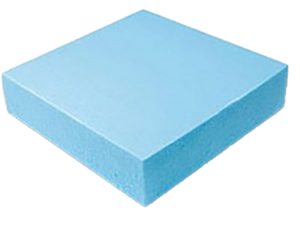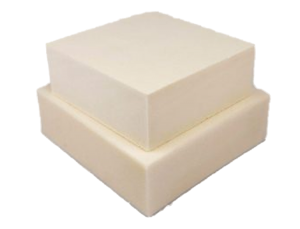Insulation Comparison: Rigid Foam Insulation Types
Rigid-foam insulation packs a lot of R-value into a thin package, but not all rigid foam insulation performs equally. Choose you insulation materials wisely by educating yourself on the unique performance characteristics of each rigid foam insulation type. Review the insulation comparison table below, so you can weigh the benefits of using each type of rigid foam insulation side-by-side.
For easy to share information on the benefits of using expanded polystyrene (EPS) as an alternative to extruded polystyrene (XPS), you can download our sell sheet below.

Expanded polystyrene (EPS)
•The most versatile of the three rigid insulation options
•Used in Roof, Wall, Floor, Below Grade & Structural GeoFoam applications
•Used most widely in insulated concrete forms and structural insulated panels
•Highest average R-value per dollar (about 4.6 R per inch) – costs the least, while meeting or exceeding all required building and energy codes
•Approved for ground contact, below grade applications and can be treated to resist insects
•Does not retain water over the long term
•Should be used over house wrap, or with a product that incorporates a factory laminated option
•Available faced or unfaced
•Faced products are considered vapor retardant and specialty products are considered vapor barriers
•Warrant 100% of R-value over the long term since does not degrade over time

Extruded polystyrene (XPS)
•Easily recognized by its blue, green, or pink color
•Falls in the middle of the three types of rigid-foam insulation in both cost and R-value
•Used most in walls or below grade applications
•Recyclable, and at about R-5 per inch, costs around 42¢ per sq. ft. for a 1-in.-thick 4×8 panel
•Comes unfaced or with a number of different plastic facings
•Unfaced 1-in.-thick has a perm rating around 1, making it semipermeable
•Thicker and faced is stronger and can have a lower perm rating
•Considered a vapor retarder, not a vapor barrier
•Absorbs more moisture than other insulation over the long term, and as a result its warranty doesn’t honor R-value retention over the long haul

Polyisocyanurate (Polyiso, ISO)
•Most often used in roofing applications
•Average cost of 70¢ per sq. ft. for a 1-in.-thick panel (may vary based on region)
•Standard R-Value of R 5.8 per inch
•The manufacturing process starts with liquid foam
•Not recyclable
•Has to be sprayed against a substrate to form a rigid panel, so all ISO panels are faced
•Different facings affect the performance of the panel in both durability and perm rating
•Foil-faced panels are considered impermeable (because applying these products as sheathing creates an exterior vapor barrier, they never should be used with an interior vapor barrier)
•More permeable panels are faced with fiberglass and can be used without creating a vapor barrier

